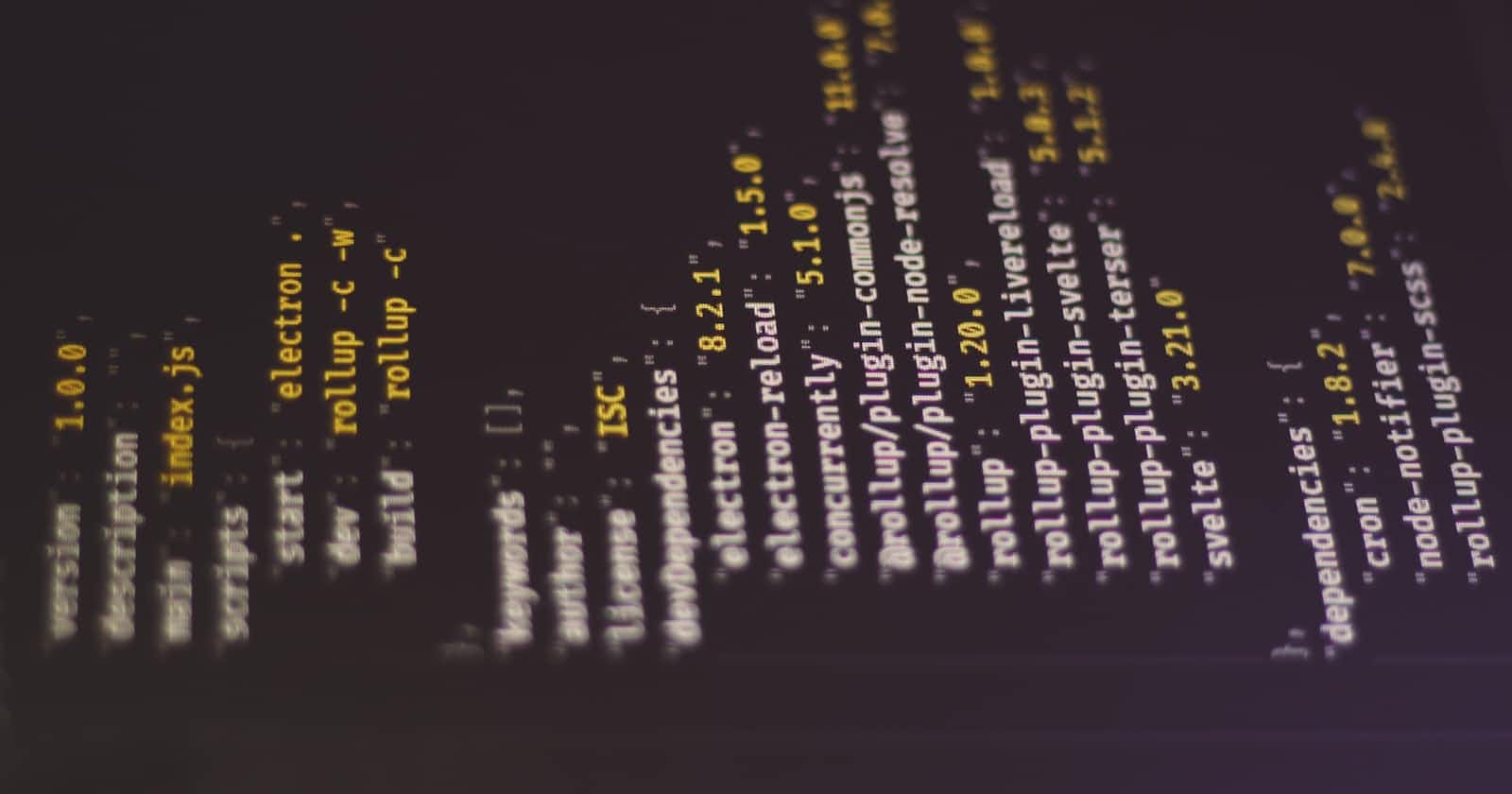
Photo by Ferenc Almasi on Unsplash
Mastering JSON in JavaScript in 2023: A Beginner's Guide to Efficient Data Exchange
#WeMakeDevs
Introduction
JSON (JavaScript Object Notation) is a lightweight data-interchange format that has become the standard for data transfer between servers and clients. It is easy to read and write, and its structure is based on key-value pairs, which makes it simple to parse and manipulate data.
In this blog post, we will dive deeper into JSON in JavaScript, its syntax, uses, and advantages. We will also look at some examples of how JSON can be used in real-life scenarios.
What is JSON?
JSON is a format used to store and exchange data between web browsers and servers. It is similar to XML, but with a simpler and more streamlined structure. JSON uses a key-value pair system to store data, which makes it easy to parse and manipulate data.
JSON syntax
JSON uses a simple syntax that is easy to read and write. A JSON object is enclosed within curly braces { }, and each key-value pair is separated by a comma. The key and the value are separated by a colon.
Here is an example of a JSON object:
perlCopy code{
"name": "John Doe",
"age": 30,
"email": "johndoe@example.com"
}
In the example above, the object has three key-value pairs: name, age, and email. The name and email keys have string values, while the age key has a numeric value.
JSON arrays
JSON arrays are used to store a collection of objects. An array is enclosed within square brackets [ ], and each object is separated by a comma.
Here is an example of a JSON array:
perlCopy code[
{
"name": "John Doe",
"age": 30,
"email": "johndoe@example.com"
},
{
"name": "Jane Doe",
"age": 25,
"email": "janedoe@example.com"
}
]
In the example above, the array contains two objects, each with three key-value pairs.
Using JSON in JavaScript
JavaScript provides built-in support for working with JSON. You can convert a JavaScript object into a JSON object using the JSON.stringify() method. This method takes a JavaScript object as its parameter and returns a JSON object.
Here is an example:
javascriptCopy codeconst person = {
name: "John Doe",
age: 30,
email: "johndoe@example.com"
};
const json = JSON.stringify(person);
console.log(json);
The output of the code above will be:
perlCopy code{"name":"John Doe","age":30,"email":"johndoe@example.com"}
You can also convert a JSON object back into a JavaScript object using the JSON.parse() method. This method takes a JSON object as its parameter and returns a JavaScript object.
Here is an example:
rustCopy codeconst json = '{"name":"John Doe","age":30,"email":"johndoe@example.com"}';
const person = JSON.parse(json);
console.log(person);
The output of the code above will be:
cssCopy code{name: "John Doe", age: 30, email: "johndoe@example.com"}
Real-life examples of JSON in JavaScript
- Sending data between servers and clients
JSON is commonly used to transfer data between servers and clients. For example, when a user submits a form on a website, the data is sent to the server as a JSON object. The server can then parse the JSON object and use the data to update a database or perform some other action.
- Storing configuration data
JSON can also be used to store configuration data in web applications. For example, a web application might have a configuration file that contains various settings for the application.
Happy Learning
